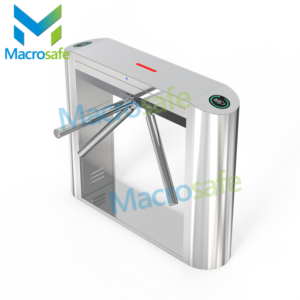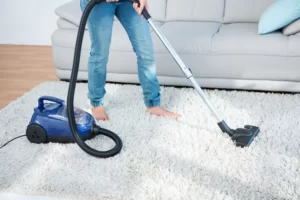Mastering Brush Removal: A Complete Guide for a Cleaner Landscape
In the realm of landscaping, the allure of a pristine, well-manicured environment is universally appreciated. Yet, the presence of unruly brush can swiftly transform a picturesque scene into a disheveled landscape. To embark on the journey of cultivating a cleaner and more visually appealing outdoor space, it is imperative to delve into the nuanced art and science of brush removal. This exhaustive guide aims to equip readers with a thorough understanding of the various types of brushes, the essential tools and equipment required, and a step-by-step approach to executing an effective brush removal strategy. Whether tackling a modest backyard or a sprawling estate, this article endeavors to empower readers with the knowledge needed to master the intricacies of brush removal.
Types of Brushes and Vegetation
Before diving into the intricacies of brush removal, it is essential to comprehend the diverse types of vegetation that can disrupt the serenity of a landscape. Invasive species, overgrown vegetation, and woody shrubs are common adversaries that can mar the beauty of outdoor spaces. Each variety poses unique challenges, necessitating a tailored approach to removal. Throughout this guide, we will explore not only the characteristics of each type but also delve into the reasons why brush removal is a critical aspect of maintaining a healthy and aesthetically pleasing environment.
Tools and Equipment for Brush Removal
The success of any brush removal project hinges significantly on the choice of tools and equipment. From the simplicity of hand pruners and loppers for smaller-scale endeavors to the robust efficiency of chainsaws and excavators for more extensive projects, selecting the appropriate tools is paramount. This section endeavors to guide readers through the myriad of equipment options available, facilitating informed decisions based on the size and complexity of their unique brush removal projects.
Step-by-Step Guide to Effective Brush Removal
Embarking on a brush removal project without a well-thought-out plan can lead to frustration and inefficiency. This section unfolds a comprehensive step-by-step guide, commencing with the crucial phase of surveying the landscape and identifying hazardous areas. By emphasizing the importance of setting clear objectives and developing a safe and efficient strategy, readers will be well-prepared to execute the removal process with precision. Additionally, practical tips will be provided to steer clear of common pitfalls that may otherwise derail even the most well-intentioned efforts.
Environmental Considerations
While the removal of unsightly brush is undeniably a priority, it is equally imperative to consider the broader environmental impact of such activities. Balancing the desire for a cleaner landscape with environmental consciousness, this section explores sustainable practices and eco-friendly approaches. Minimizing disruption to the surrounding ecosystem and ensuring the proper disposal of removed brush are integral aspects of responsible brush removal that will be meticulously examined.
Safety Measures during Brush Removal
Brush removal is not without its inherent risks, and prioritizing safety is non-negotiable. From the meticulous selection and use of protective gear to being well-prepared with first aid measures, this section underscores the paramount importance of creating a safe working environment. Understanding and implementing these safety measures are essential for both novices venturing into the realm of brush removal and seasoned professionals seeking to enhance their existing practices.
Maintaining a Brush-Free Landscape
Achieving a brush-free landscape is a commendable feat, but the work does not culminate at the removal stage. This section delves into the proactive measures required to sustain a brush-free environment, including regular inspections and early intervention strategies. By adopting these long-term maintenance practices, readers can ensure that their landscapes remain pristine and visually appealing for years to come.
Cost Considerations
Budgetary constraints are an omnipresent reality for many property owners. Understanding the costs associated with brush removal is crucial for effective planning and execution. This section provides in-depth insights into estimating the budget for brush removal, identifying potential cost-saving measures, and exploring affordable solutions. Empowering readers with a comprehensive understanding of the financial aspects ensures that brush removal is not only a feasible but also an accessible endeavor for a diverse audience.
Frequently Asked Questions
What is removing brush?
Removing brush refers to the process of clearing away or eliminating dense and overgrown vegetation, often consisting of small trees, shrubs, and other underbrush. This is commonly done to prepare land for construction, agriculture, landscaping, or fire prevention.
What is the best way to get rid of brushes?
The best way to get rid of brush depends on the amount and type of vegetation. Common methods include:
- Chipping or Shredding: Using a wood chipper to break down branches and brush into smaller pieces.
- Burning: Controlled burning of brush piles, following local regulations.
- Hauling Away: Transporting the brush to a designated disposal site.
- Renting Equipment: Renting heavy machinery, like a brush hog or mulcher, for large-scale clearing.
What can I use to remove brush?
Several tools and equipment can be used to remove brush, including:
- Chainsaws: For cutting down small trees and branches.
- Brush Cutters: Motorized tools designed specifically for cutting through dense vegetation.
- Excavators or Bulldozers: Heavy machinery used for clearing larger areas.
- Wood Chippers: Devices that chip or shred branches and brush into smaller pieces.
How do you get rid of a large amount of brush?
To get rid of a large amount of brush, consider the following:
- Renting Equipment: Heavy machinery like chippers, mulchers, or bulldozers.
- Chipping or Shredding: Break down the brush into smaller pieces for easier disposal.
- Hauling Services: Hire a service to transport the brush to a disposal site.
- Burning: If permitted and safe, controlled burning of brush piles.
How do you get rid of brush piles fast?
To get rid of brush piles quickly:
- Use Heavy Equipment: Rent machinery like chippers or mulchers.
- Organize Piles: Arrange the brush into manageable piles for efficient removal.
- Hauling Services: Hire professionals to quickly transport the piles away.
What is a brush pile?
A brush pile is a collection of cut branches, small trees, and other vegetation that has been cleared from an area. These piles are often created during land clearing or landscaping activities. The disposal methods for brush piles can include chipping, burning (where permitted), hauling away, or other means of removal.
Conclusion
In the tapestry of mastering brush removal, the journey encompasses a multifaceted undertaking that requires a harmonious blend of knowledge, tools, and unwavering dedication. This exhaustive guide has meticulously walked readers through the various dimensions of brush removal, from unraveling the intricacies of different brush types to implementing stringent safety measures and considering the broader environmental impact. Armed with this newfound knowledge, readers are now well-equipped to take on the challenge of cultivating a cleaner, more beautiful landscape. The key lies in adopting a thoughtful and strategic approach, coupled with an enduring commitment to long-term maintenance practices. As the echoes of the brush fade away, a sense of accomplishment and aesthetic rejuvenation will undoubtedly resonate in the transformed landscape. Happy brushing!













